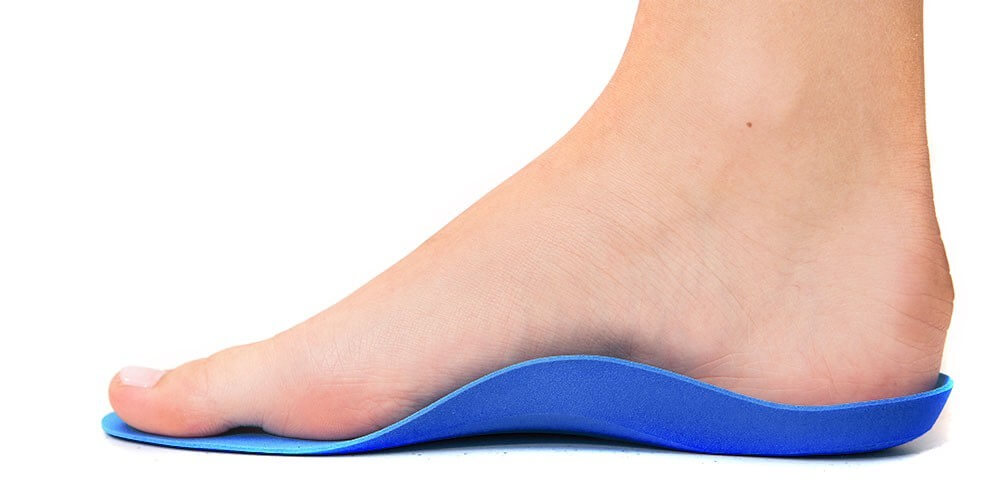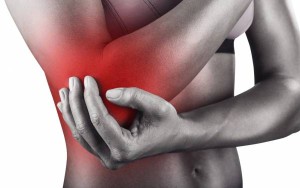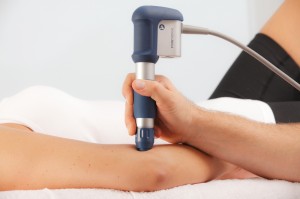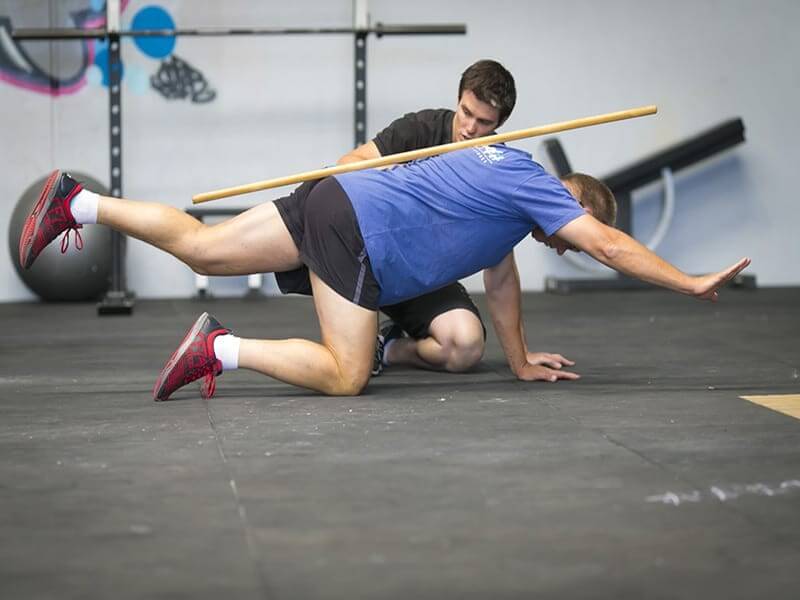
What is Tennis Elbow?

Tennis elbow, or lateral epicondylitis, is an overuse tendinopathy of the lateral wrist extensor muscles where they insert at the elbow.
This condition occurs most commonly in adults between 30 and 50 years, with risk factors including repetitive use of the elbow, tobacco use,
and other hand issues such as carpal tunnel syndrome and de Quervain’s tenosynovitis. The cause of pain and disability in lateral
epicondylitis is unknown. It is likely to be multifactorial with an emphasis on repetitive microtrauma and overuse in genetically
predisposed individuals.
Who does it affect?
Lateral epicondylitis affects 1–3 % of adults in the general population each year [1, 34]. However, the incidence may differ depending on the population of interest as more than 50 % of amateur tennis players reported having been affected with lateral epicondylitis at some point in their career [19]. Typically, adults in the fourth or fifth decade of life are affected. Males and females are affected equally [10, 30], and oftentimes it is the dominant arm that is symptomatic.
Manual laborers, smokers, and those who repetitively bend/straighten their elbow for more than 1 h/day and have poor social support have been associated with higher rates of lateral epicondylitis [10, 14, 30, 35]. The burden on the economic system is substantial, with 5 % of the affected working-age subjects reporting work absence because of elbow symptoms in the past 12 months [35]. In addition, comorbid conditions, including rotator cuff pathology, DeQuervain’s disease, carpal tunnel syndrome, and oral corticosteroid therapy, have been shown to be independent risk factors for developing lateral epicondylitis. The exact mechanism for this is unclear [33].
How effective is Shockwave Therapy as a treatment?
At Physio Tullamore we use the most evidence based treatments. Below is a study looking at the effectiveness of Shockwave Therapy for the treatment of Tennis Elbow.

Title: Efficacy of low-energy extracorporeal shockwave therapy and a supervised clinical exercise protocol for the treatment of chroniclateral epicondylitis: A randomised controlled study
(Author/Creator: Sarkar, Bibhuti ; Das, Pooja Ghosh ; Equebal, Ameed ; Mitra, Puspal Kumar ; Kumar, Ratnesh ; Anwer, Shahnawaz (Hong Kong Physiotherapy Journal, 2013, Vol.31(1), pp.19-24 [Peer Reviewed Journal])
Subjects: extracorporeal shockwave therapy ; lateral epicondylitis ; supervised exercise protocol
Description: This randomised controlled trial was designed to evaluate the efficacy of low-energy extracorporeal shockwave therapywith a supervised exercise protocol for the treatment of chronic lateral epicondylitis. Thirty patients of lateral epicondylitis were randomly placed into two groups: an experimental group (n = 15) and a control group (n = 15). The experimental group received low-energy extracorporeal shockwave therapy and supervised exercise once a week for 3 weeks, whereas the control group received a supervised exercise protocol three times a week. Both the groups were instructed to carry out a home exercise programme twice daily for 4 weeks.Outcome parameters included in this study were pain intensity, pain-free grip strength, and the Disability of Arm, Shoulder, and Hand questionnaire. Data were collected at baseline and after the end of treatment (at 4th week). There was a decline in pain, and improvements in pain-free grip strength and limb function in both groups compared with the baseline values. At the end of the treatment period, the experimental group had greater reduction in pain intensity and better improvement in limb function (p < 0.01).
It can be concluded that low-energy extracorporeal shockwave therapy, when combined with regular exercise, is an effective method for reducing pain and improving upper limb function in patients with chronic lateral epicondylitis.
References
1.
Allander E. Prevalence, incidence, and remission rates of some common rheumatic diseases or syndromes. Scand J Rheumatol. 1974;3:145–53.
CrossRefPubMed
2.
Alredson H, Ljung B-O, Thorsen K, et al. In vivo investigations of ECRB tendons with microdialysis technique-no signs of inflammation but high amounts of glutmate in tennis elbow. Acta Orthop Scand. 2000;71:475–9.
CrossRef
3.
Bales CP, Placzek JD, Malone KJ, Vaupel Z, Arnoczky SP. Microvascular supply of the lateral epicondyle and common extensor origin. J Shoulder Elbow Surg. 2007;16:497–503.
CrossRefPubMed
4.
Balk ML, Hagberg WC, Buterbaugh GA, Imbriglia JE. Outcome of surgery for lateral epicondylitis (tennis elbow): effect of worker’s compensation. Am J Orthop. 2005;34(3):122–6.
PubMed
5.
Berry N, Neumeister MW, Russell RC, Dellon AL. Epicondylectomy versus denervation for lateral humeral epicondylitis. HAND. 2011;6(2):174–8.
CrossRefPubMedCentralPubMed
6.
Bunata Robert E, Brown DS, Capelo R. Anatomic factors related to the cause of tennis elbow. J Bone Joint Surg Am. 2007;89:1955–63.
CrossRefPubMed
7.
Calfee RP, Patel A, Dasilva MF, Akelman E. Management of lateral epicondylitis: current concepts. J Am Acad Orthop Surg. 2008;16:19–29.
PubMed
8.
Carp L. Tennis elbow caused by radiohumeral bursitis. Arch Surg. 1932;24:905–22.
CrossRef
9.
Dellon AL, Kim J, Ducic I. Painful neuroma of the posterior cutaneous nerve of the forearm after surgery for lateral humeral epicondylitis. J Hand Surg Am. 2004;29(3):387–90.
CrossRefPubMed
10.
Dimberg L. The prevalence and causation of tennis elbow (lateral humeral epicondylitis) in a population of workers in an engineering industry. Ergonomics. 1987;30(3):573–9.
CrossRefPubMed
11.
Faro F, Wolf JM. Lateral epicondylitis: review and current concepts. J Hand Surg. 2007;8:1271–7.
CrossRef
12.
Giangarra CE, Conroy B, Jobe FW, et al. Electromyographic and cinematographic analysis of elbow function in tennis players using single-and double-handed backhand strokes. Am J Sports Med. 1993;21:394–9.
CrossRefPubMed
13.
Grewal R, MacDermid JC, Shah P, King GJ. Functional outcome of arthroscopic extensor carpi radialis brevis tendon release in chronic lateral epicondylitis. J Hand Surg Am. 2009;34(5):849–57.
CrossRefPubMed
14.
Haahr JP, Andersen JH. Physical and psychosocial risk factors for lateral epicondylitis: a population based case-referent study. Occup Environ Med. 2003;60:322–9. doi:10.1136/oem.60.5.322.
CrossRefPubMedCentralPubMed
15.
Hatch GF III, Pink MM, Mohr KJ, et al. The effect of tennis racket grip size on forearm muscle firing patterns. Am J Sports Med. 2006;34:1977–83.
CrossRefPubMed
16.
Hennig EM, Rosenbaum D, Milani TL. Transfer of tennis racket vibrations onto the human forearm. Med Sci Sports Exerc. 1992;24:1134–40.
CrossRefPubMed
17.
Jobe FW, Ciccotti CM. Lateral and medial epicondylitis of the elbow. J Am Acad Orthop Surg. 1994;2:1–8.
PubMed
18.
Kelley JD, Lombardo SJ, Pink M, Perry J, Giangarra CE. Electromyographic and cinematographic analysis of elbow function in tennis players with lateral epicondylitis. Am J Sports Med. 1994;22:359–63.
CrossRefPubMed
19.
Kitaie E, Itay S, Ruder A, Engel J, Modan M. An epidemiological study of lateral epicondylitis (tennis elbow) in amateur male players. Ann Chir Main Memb Super. 1986;5:113–21.
CrossRef
20.
Laban MM, Iyer R, Tamler MS. Occult periarthrosis of the shoulder: a possible progenitor of tennis elbow. Am J Phys Med Rehabil. 2005;84:895–8.
CrossRefPubMed
21.
Lanz T, Wachsmuth W. Praktische anatomie. Berlin: Springer; 1959.
22.
Li FX, Fewtrell D, Jenkins M. String vibration dampers do not reduce racket frame vibration transfer to the forearm. J Sports Sci. 2004;22:1041–52.
CrossRefPubMed
23.
Ljung B-O, Forsfren S, Frieden J. Substance P and calcitonin gene related peptide expression at the extensor carpi radialis brevis mucle origin: implications for the etiology of tennis elbow. J Orthop Res. 1999;17:554–9.
CrossRefPubMed
24.
McVay CB. Surgical anatomy, vol 2, 6th ed. Philadelphia: Saunders; 1984.
25.
Morrey BF. The elbow and its disorders, 4th ed. Philadelphia: Saunders; 2009.
26.
Nirschl RP, Ashman ES. Elbow tendi-nopathy: tennis elbow. Clin Sports Med. 2003;22:813–6.
CrossRefPubMed
27.
Nirschl RP, Pettrone FA. Tennis el-bow: the surgical treatment of lateral epicondylitis. J Bone Joint Surg Am. 1979;61:832–9.
PubMed
28.
Runge F. Zur genese und behandlung des schreibekramfes. Berl Klin Wochenschr. 1873;10:245.
29.
Schneeberger AG, Masquelet AC. Arterial vascularization of the prioximal extensor carpi radialis brevis tendon. Clin Orthop Relat Res. 2002;46:3–12.
30.
Shiri R, Viikari-Juntura E, Varonen H, Heliovaara M. Prevalent and determinants of lateral and medial epicondylitis: a population study. Am J Epidemiol. 2006;164(11):1065–74.
CrossRefPubMed
31.
Smith RW, Papadopolous E, Mani R, Cawley MI. Abnormal microvascular responses in a lateral epicondylitis. Br J Rtheumatol. 1994;33:1166–8.
CrossRef
32.
Stroede CL, Noble L, Walker HS. The effect of tennis racket string vibration dampers on racket handle vibrations and discomfort following impacts. J Sports Sci. 1999;17:379–85.
CrossRefPubMed
33.
Titchener AG, Fakis A, Tambe AA, Smith C, Hubbard RB, Clark DI. Risk factors in lateral epicondylitis (tennis elbow): a case-control study. J Hand Surg Eur Vol. 2013;38:159–64.
CrossRefPubMed
34.
Verhaar JA. Tennis elbow: anatomical, epidemiological and therapeutic aspects. Int Orthop. 1994;18:263–7.
CrossRefPubMed
35.
Walker-Bone K, Palmer KT, Reading I, Coggon D, Cooper C. Occupation and epicondylitis: a population-based study. Rheumatology. 2012;51:305–10.
CrossRefPubMedCentralPubMed
36.
Wolf JM, Mountcastle S, Burks R, Sturdivant RX, Owens BD. Epidemiology of lateral and medial epicondylitis in a military population. Mil Med. 2010;175(5):336–9 (4).
CrossRefPubMed


